Year End 2015
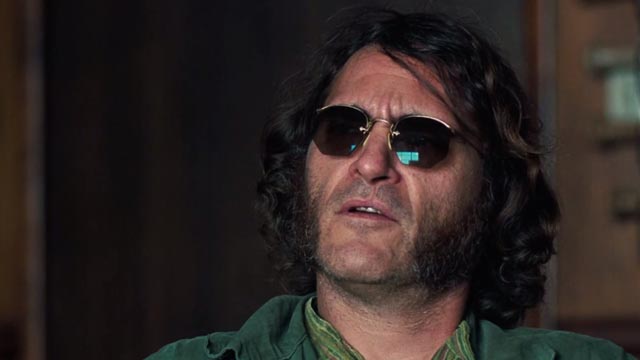
Well, it’s that time of year again, when anyone who writes regularly about movies feels duty-bound to offer some kind of “year’s best” round-up. For me, this has come to feel like an arbitrary activity, the choosing of one thing over another devoid of any lasting meaning. But here I am, doing it again!
In theatres
This year I broke my own previous record for least number of movies seen in a theatre – just seven. Of those, I liked six, being largely disappointed by the seventh Fast & Furious which managed to push even that series’ levels of implausibility beyond the limits of my patience for dumb action.
However, I liked all the rest, some very much: Paul King’s charming Paddington, Paul Thomas Anderson’s stoner detective noir Inherent Vice, David Robert Mitchell’s genuinely creepy It Follows, M. Night Shyamalan’s not-quite-so-creepy but nonetheless effective young adult horror The Visit, Guillermo De Toro’s lush Nineteenth Century ghostly romance Crimson Peak, and George Miller’s revival of spectacular non-CG action mayhem Mad Max Fury Road.
If I absolutely had to choose one of these as “the best” of the year (out of what I’ve personally seen – I’m sure there were many other excellent movies I didn’t catch), I’d say it was Inherent Vice for the lightness and assurance with which Anderson evokes another time and an earlier style of movie-making governed by a slower pace of life, while effortlessly handling an intricately convoluted plot involving a large collection of vivid characters. Like Paddington and Fury Road, it conjures up the pleasures of a kind of visual storytelling too often lost in the flashy application of new technologies.
On disk
As always, despite perennial predictions that streaming will inevitably put an end to the physical media of DVD and Blu-ray, there were an enormous number of impressive and desirable releases this year – far too many for even a pathological collector like me to keep up with (though I still spend far too much money on my habit).
My favourite companies continued to release often generously supplemented editions of both old and new titles, reinforcing my brand loyalties.
Arrow Video
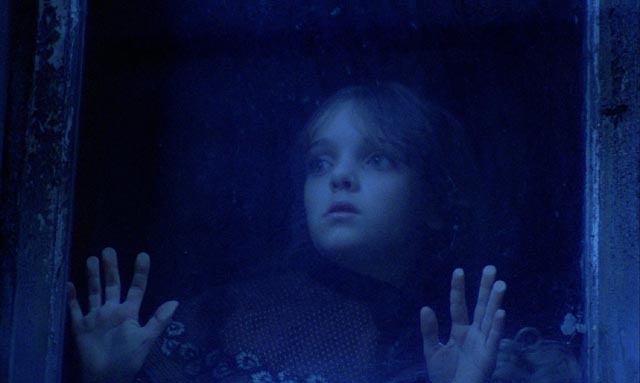
England’s Arrow Video has put major effort into restoring a wide range of films – John Mackenzie’s The Long Good Friday and Neil Jordan’s Mona Lisa for an excellent box set; Nikos Mastorakis’ dubious Island of Death; David Cronenberg’s Crimes of the Future (a new transfer passed on to Criterion for inclusion in their Blu-ray release of The Brood, with Criterion in turn supplying their transfer of Videodrome to Arrow for a superb special edition which included all of Cronenberg’s early work). Most impressive, perhaps, were Arrow’s eye-popping restoration of Mario Bava’s Blood and Black Lace, which does justice to Bava’s remarkable use of colour, and the extremely complex reconstruction of Bava’s Rabid Dogs (actually released late in 2014, though I only saw it this year); this involved piecing the film back together from the original negative mutilated by Lamberto Bava and Alfredo Leone for their bastardized version of the film, Kidnapped, with missing frames culled from an older standard definition tape master. Although this created an initially distracting patchwork effect, it resulted in what will inevitably remain the definitive version of this once-lost masterpiece.
In addition to their Videodrome special edition, Arrow also released a dual-format edition of Rabid (like last years Shivers, the transfer/restoration was done by the Toronto International Film Festival in collaboration with Lionsgate); all of these releases, including Criterion’s recent The Brood Blu-ray, are so good that they virtually demand a re-evaluation of Cronenberg’s early career. Together, they display an impressively rapid development in the director’s technical skills – writing, use of camera and sound, editing – but also a skill with actors which visibly improves from one film to the next. While superficially Cronenberg seems to have started out slumming in the disreputable backwaters of low-budget exploitation, gradually working his way up to an international prestige that marks him as perhaps the finest filmmaker ever to come out of English Canada, these opportunities to revisit his early work in a form which may be better than they ever originally looked on screen, reveal him to be a natural talent who had a sure grasp of his chosen medium almost from the start, a talent which raised those early works far above the limitations of genre and budget.
Two more disks from Arrow which deserve a place at the top of my list for the year are their stunning editions of Walerian Borowczyk’s The Strange Case of Dr. Jekyll and Miss Osborne and Aleksei German’s Hard To Be a God, both of which fully display the capacity of Blu-ray for emulating the rich possibilities of film stock – the former with its subtle uses of colour and diffusion (always hard to represent accurately digitally) and the latter with its silvery black-and-white which renders remarkable amounts of detail in the densely crowded images. (In the most recent issue of Video Watchdog [180], there are a pair of fascinating interviews with Arrow’s James White and David Mackenzie which illuminate not only the arduous process of film restoration, but also the incredibly complex technical difficulties of mastering those restorations to hi-def video.)
While the transfer supplied to Arrow by MGM may not offer that kind of revelatory experience, the Blu-ray of W.D. Richter’s The Adventures of Buckeroo Banzai Across the Eight Dimension is a welcome hi-def revival of this wildly inventive, sadly neglected adventure comedy which manages to pack more ideas into less than two hours than some highly overrated money-spinning series manage in seven movies spanning four decades.
Already on hand but not yet watched are Arrow’s box sets of Kinji Fukasaku’s Battles Without Honor and Humanity and Love + Anarchism, a collection of films by Kiju Yoshida, a director whose work I have not yet seen. And coming soon, their Jacques Rivette set, which includes the full eight-part, 13-hour Out One: noli me tangere as well as the shorter theatrical version, Out One: Spectre, plus two other features from that period of the director’s career.
Criterion
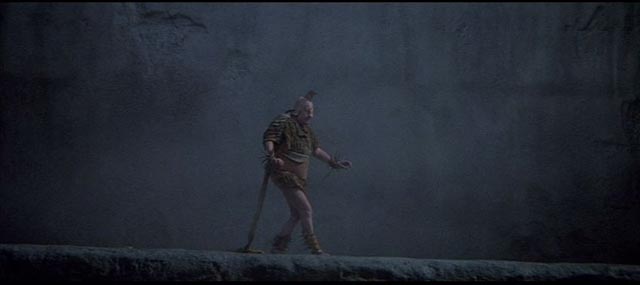
Criterion continues to mix hi-def upgrades of older releases with new titles. Among the former, Leonard Kastle’s The Honeymoon Killers, Georges Franju’s Les Yeux Sans Visage, and the combined edition of Robert Siodmak’s and Don Siegel’s versions of The Killers have all benefited from the improvements in technology since their original DVD editions.
While impressive editions of Fellini Satyricon, Richard Brooks’ In Cold Blood, two of Costa-Gavras’ finest films, The Confession and State of Siege and the aforementioned The Brood are high on my list, I think the most rewarding disks of the year were the gorgeous Blu-ray of Renoir’s A Day in the Country with its haunting mix of comic nostalgia and a deep sense of loss, and three releases which in one way or another proved to be revelatory: Robert Montgomery’s Ride the Pink Horse, a little-known yet distinctively idiosyncratic noir; Jan Troell’s Here Is Your Life, a long, episodic historical drama teeming with life and a rich range of emotions; and finally the recent Eclipse set of four films by Julian Duvivier, a major talent from the thirties whose reputation has faded but who obviously deserves to be rediscovered.
The BFI
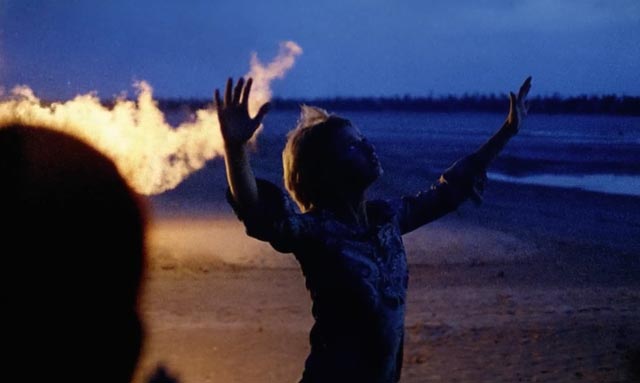
The two highlights from the BFI this year were a couple of box sets, each very different from the other.
Although I was familiar with the French novelist Alain Robbe-Grillet from reading several of his novels back in the late-’70s, early-’80s and from Alain Resnais’ Last Year at Marienbad, I had never seen any of the films he had written and directed himself until I bought a copy of Six Films 1963-1974. Applying to film the same ideas and techniques he brought to the novel, Robbe-Grillet deconstructs narrative in complex yet playful ways (and indulges his own sexual predilections) with imagery which draws on various modern artists (particularly in the later colour films). The set is enriched by the inclusion of lengthy interviews with the filmmaker and insightful commentaries by Video Watchdog’s Tim Lucas. An excellent introduction to a fascinating artist who has remained somewhat obscure, and certainly tangential to the mainstream.
In many ways, you couldn’t get farther from Robbe-Grillet’s experimental features than the mid-’60s television productions collected in the seven-disk Out of the Unknown DVD set. This features the twenty surviving episodes of the BBC science fiction series which ran from 1965 to 1971, plus one incomplete episode, and four reconstructions using stills, script excerpts and audio. There are also eleven commentaries, a long retrospective documentary, an interview with prolific TV director James Cellan Jones who did one episode of the series, plus several stills galleries.
Although production values are more limited than U.S. series from the same period, many of the scripts are sophisticated adaptations from the work of an impressive array of writers – John Wyndham, Isaac Asimov, John Brunner, Frederick Pohl, C.M. Kornbluth, Alan E. Nourse, William Tenn, E.M. Forster, Clifford Simak – directed by people like Peter Sasdy, Philip Saville, Alan Bridges and Rudolph Cartier (who virtually invented British sci-fi television with his productions of Nigel Kneale’s adaptation of Nineteen Eighty-Four and the Quatermass serials). Original producer and story editor Irene Shubik’s aim was to create an adult-oriented series (at the same time the BBC was launching the kid-friendly Dr. Who), and for the most part she succeeded within budgetary limitations; after two series, she left the show, and by the fourth and final series it was broadened out to include supernatural stories.
Also of interest were two very different depictions of war. The restoration of Walter Summers’ The Battles of Coronel and Falkland Islands, a reconstruction of the first major naval engagements of World War One, is very impressive. The film benefited from the cooperation of the British Navy and extensive shooting on real warships. Made just a decade after the war’s end, it is surprisingly respectful towards the German Navy as it even-handedly depicts the strategic and tactical aspects of the two battles.
Germany Pale Mother is the first film I’ve seen by Helma Sanders-Brahms, a German director whose career began roughly contemporaneous with Werner Herzog, Wim Wenders and Rainer Werner Fassbinder, and whose work was apparently important to the New German Cinema. I confess I knew nothing about her until this BFI release, which inclines me to think that her feminist concerns had made her less visible than her male counterparts.
Germany Pale Mother (1980) offers an unfamiliar perspective on a very familiar subject: Germany under Nazi rule. Based on the experiences of her parents, Sanders-Brahms tells the story of Lene, who marries Hans, a young man conscripted at the start of the War. Her struggle to survive at home while he witnesses and becomes involved in atrocities on the Eastern Front gradually destroys their relationship and, as the war turns against Germany, Lene is forced to wander through the ruined landscape with her young daughter Anna. As the war ends, Lene suffers a disfiguring facial paralysis and contemplates suicide, by this point (as the title suggests) symbolically fused with her crippled, divided nation.
When the film was first released, although the quality of its imagery and performances was recognized, its focus on the experience of a mother and her child (told through the eyes of that young child) – clearly illustrating one of feminism’s key tenets, that the personal is political – attracted criticism of its “sentimentality”. Particularly given that its focus was on Nazism and the War, historical events whose importance seems overwhelmingly to reside in male experience, Germany Pale Mother forcefully asserts that women’s experience of those events was critical to the survival or death of the nation.
The BFI Blu-ray includes Sanders-Brahms’ original cut plus the theatrical version which was shortened by half-an-hour (I’ve only watched the longer version), plus a one-hour documentary in which the director revisits with her father the area of Normandy where he was posted with the Wehrmacht during the Occupation, stirring up his memories and his lasting admiration for the French.
Twilight Time
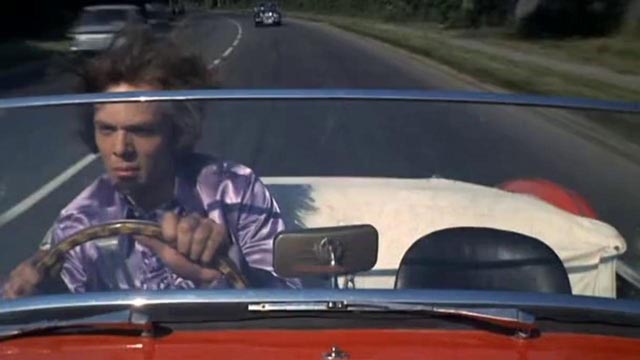
I’ve fallen behind in the past few months in my comments on Twilight Time, still one of my favourite labels. Since I last wrote, I’ve watched their editions of Sam Fuller’s House of Bamboo, a film which I hadn’t found particularly memorable when I saw it on the Fox DVD some years ago, but which I liked much more this time. Fuller’s use of widescreen adds a lot to the location shooting in post-war Japan and there are some really interesting subtexts in the story of an undercover military intelligence officer infiltrating a criminal gang of ex-U.S. soldiers involved in the black market and a series of violent robberies. As pointed out in the enthusiastic commentary by Julie Kirgo and Nick Redman, there are strong homoerotic implications which are expressed almost purely through framing and blocking of the actors.
I was much less convinced by the commentary on the disk of Mississippi Mermaid, which I found even less satisfying than The Bride Wore Black. Truffaut’s lack of interest in conventional narrative once again results in jarring ellipses which apparently are intended to focus viewer attention on thematic concerns rather than story, but for me without the support of a coherent narrative the themes come to seem arbitrary. I spent far too much time trying to figure out why the Belmondo character was doing the things he does to be able to draw much meaning from events.
Less ambitious, but more fun, were two of the label’s Halloween releases. Bob Kelljan’s Count Yorga, Vampire is a decent low budget effort to update traditional vampire tropes to a modern setting – better crafted, but perhaps less interesting than Blacula (the sequel to which Kelljan directed). Robert Quarry, an actor who seemed briefly poised for genre stardom in the early ’70s, does well as the Count, posing as a phony spiritualist in Los Angeles. Originally conceived as a soft-core riff on the genre, those elements were wisely pared back and the movie was successfully promoted as a straight horror film.
Gordon Hessler’s Scream and Scream Again has divided viewers since it first appeared. An eccentric hybrid of horror, sci-fi and political thriller, it’s undeniable that all the elements never quite fit together comfortably, but the frayed seams are actually what make it interesting for me. I like the disorientation and instability which arises from never quite knowing where it’s going. Marketed as the first time Peter Cushing, Christopher Lee and Vincent Price appeared in a movie together, that may actually have been the chief reason for audience alienation – because the three never appear together on screen (except for Lee and Price briefly at the climax), and none of them have much screen time at all as the story concentrates on other characters involved in a police investigation into a series of “vampire murders” around London and events in a repressive Eastern Bloc country.
Both these latter disks have commentaries by newcomers to Twilight Time, the enthusiastic genre chronicler David Del Valle and Tim Sullivan. The chief interest in their chatty tracks lies in the fact that they had personal connections with some of the people involved in the productions, including Vincent Price and Gordon Hessler; most interesting are their personal perspectives on Robert Quarry. The Scream and Scream Again track is, however, a bit annoying as they keep referring to the pulp novel source (by the pseudonymous Peter Saxon, a name applied to a whole stable of writers); they continuously “explain” the movie by bringing up the book’s sci-fi underpinnings which attribute everything to aliens surreptitiously infiltrating Earth – absolutely none of which applies to the adaptation which clearly centres on a more conventional fascist plot to take over the world with a synthetically created master race. It’s unnecessary, and misleading, to bring that element of the book into a reading of the film.
But of all Twilight Time’s releases this year, my favourite remains James Clavell’s To Sir, With Love.
Olive Films
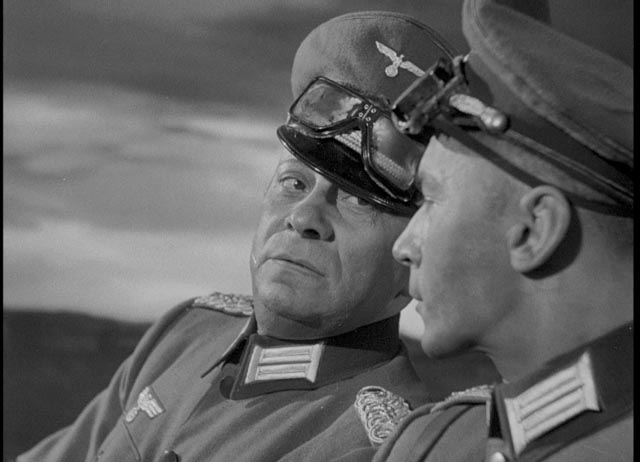
I haven’t bought much from Olive Films this year, but was grateful for their release of the previously unseen Val Guest movie The Weapon, a minor work in this interesting filmmaker’s career. Of greater interest was Lewis Milestone’s Armored Attack, which offers a really interesting case study in the impact of shifting politics on Hollywood. It began life as The North Star (oddly included as an “extra” on the disk), a piece of 1943 propaganda intended to boost support for the Soviet fight against Germany on the Eastern Front. Scripted by playwright Lillian Hellman, the film offers an absurdly romanticized view of its peasant village, complete with bad musical numbers by Aaron Copland and Ira Gershwin. There’s an all-star cast and fine cinematography by the great James Wong Howe. But its heroic depiction of ordinary villagers fighting and sacrificing for the greater good suddenly looked problematic after the war, with the raising of the Iron Curtain and the anti-communist hysteria which took over the country in the late ’40s and early ’50s. The movie was re-edited as Armored Attack in 1957, removing adulatory references to Communist Russia, concentrating on heroic Ukrainian resistance to the Nazis with narration added to criticize the additional oppression from Moscow. This revised version culminates in newsreel of the 1956 Soviet invasion of Hungary, clearly establishing that the communists were just as bad as the Nazis.
Other worthwhile releases:
Angst (Cult Epics)
Convoy (Kino Lorber)
Ex Machina (Lionsgate)
The Galapagos Affair: Satan Came to Eden (Zeitgeist)
Hickey & Boggs (Kino Lorber)
Lost Soul: The Doomed Journey of Richard Stanley’s Island of Dr. Moreau (Severin)
Manos: Hands of Fate (Synapse)
Only Lovers Left Alive (Sony)
The Tale of the Princess Kaguya (Ghibli/Universal)
The Private Life of Sherlock Holmes (Kino Lorber)
The Quatermass Xperiment (Kino Lorber)
Report to the Commissioner (Kino Lorber)
That Man From Rio/Up to His Ears (Cohen Media)
What We Do in the Shadows (Paramount)
Comments